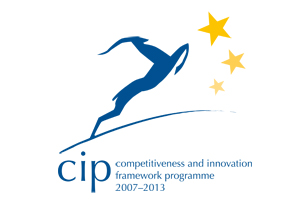| Good Practice Innovation Sheet |
  |
| Items |
Description |
| 1. WHO |
| Key people and organisations (initiator, leader, partners) |
Turismo do Oeste |
| Coastal and Marine Union EUCC and Municipality of Torres Vedras |
| |
| Key Figures |
Surface |
Inhabitants |
Tourism arrivals |
Tourism nights |
| 407,09 km² |
79,465 |
70,533 |
173,018 |
| 2. WHY |
| Reason for taking the good practice action |
Every year, thousands of visitors travel to Oeste Region’s coastal areas attracted in large part by the high quality of its waters and its outstanding sandy beaches. However, beachside destinations are considered less attractive for people with physical impediments due to the numerous barriers that are present in these areas. Such barriers constrain and inhibit this group from fully enjoying its travel experiences. Therefore, guaranteeing an easy access to these bathing areas for all people living and visiting Oeste Region is crucial, and it has been seen as a priority in order to move towards a sustainable tourism development. |
| Issues and challenge |
To implement accessibility on the beaches it was necessary to overcome some difficulties, such as morphology of access to beaches, coastal cliffs and the cost for implementing a solution for these cases and some building works. |
| 3. HOW |
| Methods /steps / tools used (to develop the good practice) |
In 2012, 6 beaches located in the municipalities of Torres Vedras were awarded within “Accessible Beach, Beach for All” due to the efforts made to improve the accessibility of their coastal bathing areas. This initiative, which started in 2004, has been well promoted and developed not only in this municipality but also in the rest of the country thanks to the cooperation of several institutions (such as the National Rehabilitation Institute, Water Institute, Tourism of Portugal and the Institute of Employment and Training). Such beaches share common characteristics in terms of mobility and safety. They need to have an easy pedestrian access, parking for people with disabilities, chutes and ramps to access the beach area, walkways in the sand, accessible toilets and first aid points, and the presence of a lifeguard at the beach. People with reduced mobility can also use amphibious wheelchairs and other auxiliary tools that are available in 3 of the 6 beaches awarded with this distinction. These singular chairs enable users to move along the ground and float on water in very safe conditions. Over the last years, the number of accessible beaches in the municipality of Torres Vedras has gradually increased. The first beach accessible was awarded in 2005, Santa Cruz - Centro beach. This beach has also recently obtained the Accessibility Certificate by Instituto de Cidades e Vilas com Mobilidade. In 2006, 2 beaches - Santa Cruz Centro and Santa Rita Norte- were awarded. This number raised to 3 in 2009, 4 in 2010, 5 in 2011 and 6 in 2012. Beach access improvements have been possible with the commitment of the Municipality of Torres Vedras and the support of the Healthy Beach Project, sponsored by Foundation Vodafone Portugal. This initiative gave to the municipality phone system, 2 amphibious wheelchairs , 2 acrylic walkways and ashtrays. |
| 4. RESULT |
| Specific/measurable results, benefits |
By implementing these practices in its beaches, the Municipality has improve the equity of access to people with reduced mobility contributing to their integration into normal tourist life. These measures have not only benefited those users with disabilities but also the elderly and people with a temporary incapacity. The municipality of Torres Vedras prepared a questionnaire for measuring the satisfaction of visitors / users of the services available on the accessible beaches, within the project “Accessible Beach, Beach for All”. Participants considered very positive the existence of facilities and services for people with disabilities. |
| Recognitions (e.g. awards) |
QualityCoast Bronze Award 2013 |
| 5. REFLECTION |
| Lessons learned |
To improve the accessibility in the beach it was important to include all stakeholders, owners and managers of the bars and restaurants located in the seaside, life-guards, local associations for people with disabilities, the local authority, volunteer firemen and citizens in general. This project is not only for tourists, but also for local residents. The goal for the future is to make all beaches accessible to all in the municipality of Torres Vedras wherever technically feasible. |
| Challenges met |
Since 2005 the number of beaches introducing access improvements for disabled has increased considerably. In other municipalities, 178 beaches received the same Award in 2012. This demonstrates the strong commitment of the Government of Portugal to ensure equality of rights and access for people with reduced mobility to its beaches. |
| Critical success factors |
This experience can be used as an example in other coastal destinations. The Municipality of Torres Vedras is preparing an accessibility action plan for the coastal zone, to the city and the parishes, under the project RAMPA. |
| 6. MORE |
| web-references, documents |
www.cm-tvedras.pt |










 Torres Vedras, Oeste Region (PT)
Torres Vedras, Oeste Region (PT)














































